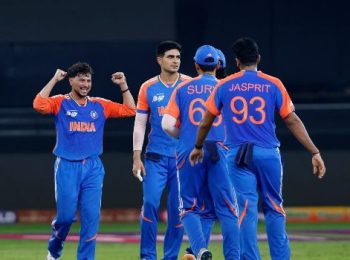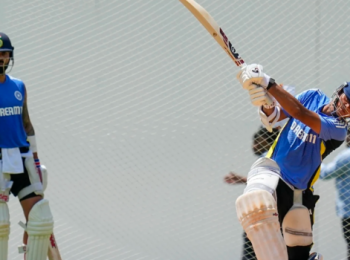A famous South African victory on day five in Guwahati secured their first Test series win in India in 25 years and only their second ever in the country. For India, the result has deepened concerns about a side showing increasing vulnerabilities at home, with tougher assignments looming over the next two years.
If we strip everything away, two truths remain from Guwahati. One, that South Africa have been outstanding, doing everything required to win in the toughest country for Test cricket. Two, that India’s batting has been nowhere near the level needed to compete, let alone dominate at home.
Day three was a perfect reflection of that contrast. South Africa put in the hard hours, trusted their plans, and showed discipline. India didn’t.
Where did Temba Bavuma’s team win the third day, and thus the series? Marco Jansen bowled with hostility and intelligence; his six wickets weren’t just about pace, they were about persistence. Simon Harmer showed what high-class, thinking spin looks like on an Indian surface. And the catching? Aiden Markram’s blinder alone summed up the intensity with which South Africa approached the day.
This is the defending World Test Championship winners playing like defending champions. They came prepared, and they are executing.
Where did India lose the plot? To get bowled out for 201 on a pitch with no real demons – after South Africa made 489 and after the openers put on 65 in 22 overs – is unforgivable.
The dismissals tell the story. Sai Sudharsan, reinstated at No 3, pulled a half-tracker from Harmer straight to midwicket. The stand-in captain, Rishabh Pant, charged out and nicked a ball miles from his body. Dhruv Jurel pulled straight to mid-on. Ravindra Jadeja and Nitish Reddy were hustled by Jansen’s bounce.
Almost the entire top seven were dismissed from soft strokes or poor judgment.
And then the irony: Kuldeep Yadav, batting at No 9, faced 134 balls, looking more secure than most of the top order. It’s a damning indictment of India’s batting application.
Meanwhile, South Africa’s Nos 7-9 scored nearly 200 runs between them (Senuran Muthusamy 109, Jansen 93). That’s the difference between a strong Test team and a stumbling one. The big picture? India’s chances of winning this Test sailed the moment they were bowled out for 201.
Saving it required them batting the entire fifth day, meaning they had to first bat deep into day four. Instead, their chances of saving the Guwahati Test all but evaporated as South Africa pressed their advantage to an unprecedented 548-run lead – the largest by any visiting team on Indian soil – before declaring at 260/5 late in the final session.
Ravindra Jadeja provided rare moments of relief, claiming four wickets, while Washington Sundar dismissed captain Bavuma with a delivery that turned sharply. But India were otherwise flat, and their worries increased when Mohammed Siraj briefly left the field with an injury.
Tristan Stubbs anchored South Africa’s effort with a composed 94, recovering from his first-innings disappointment of falling one short of a half-century. He was supported by Tony de Zorzi, who swept effectively in his 49, and later Wiaan Mulder, who added an unbeaten 35 as South Africa piled on India’s discomfort.
Set a target of 549 – one far beyond any realistic pursuit – India aimed merely to survive the final session but lost both openers before stumps, leaving them staring at defeat on day five. They were bowled out for 140 less than an hour into the second session on day five, ensuring that the batting frailties will invite scrutiny in the days ahead.
For South Africa, this was a near-perfect performance: clinical with the ball, authoritative with the bat, and tactically superior throughout. For India, it was a chastening defeat – and a warning of more such results to come at home if their planning and execution do not improve.


























